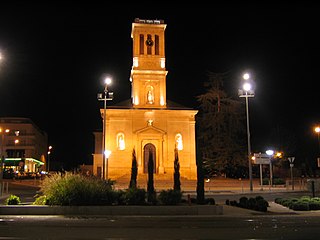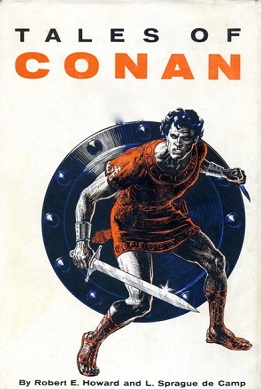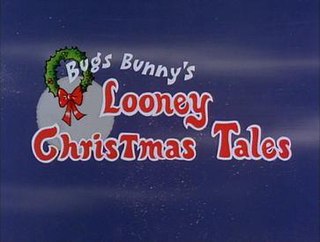
The Canterbury Tales is a collection of twenty-four stories that runs to over 17,000 lines written in Middle English by Geoffrey Chaucer between 1387 and 1400. It is widely regarded as Chaucer's magnum opus. The tales are presented as part of a story-telling contest by a group of pilgrims as they travel together from London to Canterbury to visit the shrine of Saint Thomas Becket at Canterbury Cathedral. The prize for this contest is a free meal at the Tabard Inn at Southwark on their return.

The Pilot: A Tale of the Sea is a historical novel by James Fenimore Cooper, first published in 1823. Its subject is the life of a naval pilot during the American Revolution. It is often considered the earliest example of nautical fiction in American literature. It is one of Cooper's most renowned works and is considered a classic of adventure literature. The novel follows the thrilling adventures of a mysterious and daring seafarer known as "The Pilot."

Talence is a commune in the department of Gironde, administrative region of New Aquitaine, France.

Tales of Conan is a 1955 collection of four fantasy short stories by American writers Robert E. Howard and L. Sprague de Camp, featuring Howard's sword and sorcery hero Conan the Barbarian. The tales as originally written by Howard were adventure yarns mostly set in the Middle Ages; they were rewritten as Conan stories by de Camp, who also added the fantastic element. Three of the stories also appeared in the fantasy magazine Fantastic Universe, two of them before publication of the collection and the other one after. The book has also been translated into Japanese. The collection never saw publication in paperback; instead, its component stories were split up and distributed among other "Conan" collections. "The Flame Knife" was later also published as an independent paperback.

"The Curse of Yig" is a 1929 short story co-written by H. P. Lovecraft and Zealia Bishop in which Yig, "The Father of Serpents", is first introduced.
The Blood-Stained God is a 1955 fantasy novella by American writer Robert E. Howard and L. Sprague de Camp, featuring Howard's sword and sorcery hero Conan the Barbarian. It was revised by de Camp from Howard's original story, an unpublished non-fantasy oriental tale that featured Kirby O'Donnell titled "The Curse of the Crimson God". De Camp changed the names of the characters, added the sorcery elements, and recast the setting into Howard's Hyborian Age. The story was first published in the hardbound collection Tales of Conan, and subsequently appeared in the paperback collection Conan of Cimmeria, as part of which it has been translated into German, Japanese, Spanish, Dutch, and Italian. The stories elements were used on the 1976 Peter Pan Records audio drama record: Conan the Barbarian, entitled The Jewel of the Ages.

Breton mythology is the mythology or corpus of explanatory and heroic tales originating in Brittany. The Bretons are the descendants of insular Britons who settled in Brittany from at least the third century. While the Britons were already Christianised in this era, the migrant population maintained an ancient Celtic mythos, similar to those of Wales and Cornwall.
Tales of Old Japan (1871) is an anthology of short stories compiled by Algernon Bertram Freeman-Mitford, Lord Redesdale, writing under the better known name of A.B. Mitford. These stories focus on various aspects of Japanese life before the Meiji Restoration. The book, which was written in 1871, forms an introduction to Japanese literature and culture, both through the stories, all adapted from Japanese sources, and Mitford's supplementary notes. Also included are Mitford's eyewitness accounts of a selection of Japanese rituals, ranging from harakiri (seppuku) and marriage to a selection of sermons.

Tales of Space and Time is a fantasy and science fiction collection of three short stories and two novellas written by the English author H. G. Wells between 1897 and 1898. It was first published by Doubleday & McClure Co. in 1899. All the stories had first been published in various monthly periodicals and this was the first volume to collect these stories.

Bugs Bunny's Looney Christmas Tales is a 1979 animated Christmas television special featuring Bugs Bunny and other Looney Tunes characters in three newly created cartoon shorts with seasonal themes. It premiered on CBS on November 27, 1979.

Late Night Tales: Fatboy Slim is the 19th DJ mix album released in the Late Night Tales series on Late Night Tales. It was mixed by British DJ Fatboy Slim.
Grimm Tales is a play by British poet Carol Ann Duffy, based on the original fairy tales written down by the Brothers Grimm. The play was first published in 1996. In 1997 she published a sequel, More Grimm Tales. Not all of the stories that were produced by the Brothers Grimm were adapted in the play. The ones that were included Cinderella, Snow White, Hansel and Gretal and The Golden Goose.
Tall Tales & Legends is an American folklore anthology television series of 9 episodes created by television and film actress Shelley Duvall, who also served as executive producer and presenter, alongside Fred Fuchs, following her success with her first anthology series, Faerie Tale Theatre.

The Decameron, subtitled Prince Galehaut and sometimes nicknamed l'Umana commedia, is a collection of short stories by the 14th-century Italian author Giovanni Boccaccio (1313–1375). The book is structured as a frame story containing 100 tales told by a group of seven young women and three young men; they shelter in a secluded villa just outside Florence in order to escape the Black Death, which was afflicting the city. Boccaccio probably conceived of the Decameron after the epidemic of 1348, and completed it by 1353. The various tales of love in The Decameron range from the erotic to the tragic. Tales of wit, practical jokes, and life lessons contribute to the mosaic. In addition to its literary value and widespread influence, it provides a document of life at the time. Written in the vernacular of the Florentine language, it is considered a masterpiece of early Italian prose.
Genji Monogatari Sennenki: Genji is a Japanese anime adaptation of The Tale of Genji. Originally, it was meant to be an anime adaptation of Waki Yamato's The Tale of Genji manga, but the director decided to make it a direct adaptation of the original tale. The character designs are still taken from Yamato's manga. The anime is directed by Osamu Dezaki. The series premiered on Fuji TV on January 15, 2009.
Talal is a village in Jalalvand Rural District, Firuzabad District, Kermanshah County, Kermanshah Province, Iran. At the 2006 census, its population was 208, in 40 families.
Tale-e Rudbar is a village in Rastupey Rural District, in the Central District of Savadkuh County, Mazandaran Province, Iran. At the 2006 census, its population was 86, in 22 families.

A Tale of Two Cities is a 1917 American silent historical drama film directed by Frank Lloyd and starring William Farnum, Jewel Carmen, and Charles Clary. The film is based on Charles Dickens' 1859 novel of the same name, which has been filmed a number of times.
Tale of Sand is a comic book based on an unmade film script by Jim Henson and Jerry Juhl.










